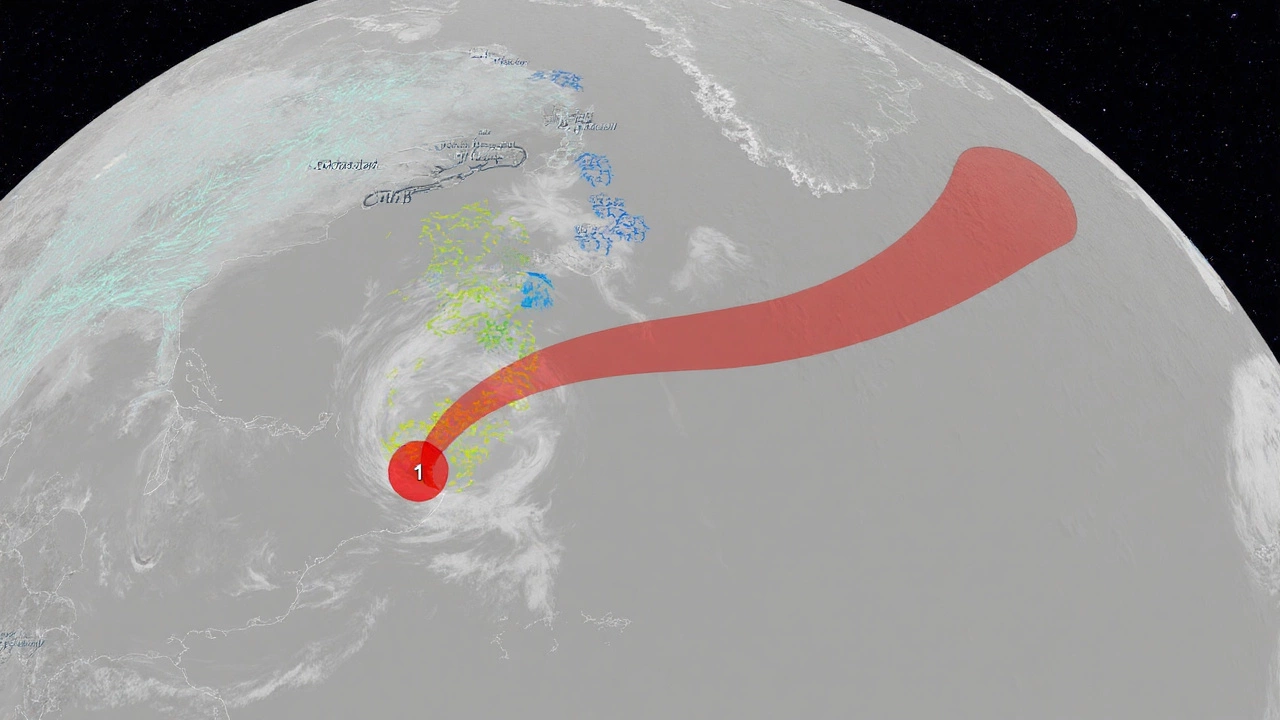Temperature Outlook and Key Drivers
The latest climate outlook released by the National Weather Service on September 19, 2025 paints a clear picture: above-normal temperatures will dominate much of the central‑eastern U.S. from October through December. The warm corridor stretches from the Mid‑Mississippi Valley east‑northeast into the Ohio Valley and reaches the southern fringe of the Great Lakes. Forecast confidence is strongest within this band, while regions outside receive an Equal Chances (EC) label due to higher uncertainty.
Two meteorological ingredients underpin this forecast. First, the ground across the core area remains unusually dry after a summer marked by below‑average precipitation. Dry soils release less evaporative cooling, allowing surface air to heat more readily. Second, the atmospheric pattern is transitioning toward a weak La Niña. Historically, La Niña tilts the jet stream northward, limiting the influx of cool Pacific air during the fall months and reinforcing daytime warmth across the interior of the continent.
Experts also point to the positive phase of the Arctic Oscillation (AO) as a supporting factor. When the AO is positive, the polar vortex stays strong and confined, reducing the chances of early cold outbreaks. This backdrop helps sustain the warm spell well into early October, setting the stage for the rest of the season’s temperature evolution.

Implications for Precipitation, Drought, and Winter Weather
While warmth takes center stage, moisture trends are less definitive. The outlook flags a slight tilt toward below‑normal rainfall in October for the Mid‑Mississippi Valley, reflecting the lingering drought that has plagued the area since early summer. Elsewhere, the forecast defaults to EC, meaning forecasters see no clear signal for either wetter or drier conditions.
The drought picture is sobering. The National Weather Service anticipates that existing dry patches will either persist or spread across the Mid‑Mississippi Valley, Ohio Valley, and southern Great Lakes. The Rockies and central High Plains are also on the radar for expanding dryness. However, there is a modest glimmer of hope for the Central and Northern Plains, where slight improvements could materialize by year‑end, provided short‑term rain events break the prolonged moisture deficit.
What does a warm fall mean for the upcoming winter? Historical patterns suggest a paradox: a balmy autumn can set the stage for a harsher winter. When the AO remains positive through the fall, it often leads to an intensified Arctic vortex that eventually forces a surge of frigid air southward later in the season. Last year’s sequence—an unusually warm October followed by a notably cold winter—offers a textbook example. If the same dynamics hold, mountain resorts and snow‑dependent economies might benefit from a burst of early‑season snow and deeper snowpacks.
- Temperature impact: Above‑normal warmth is expected to raise heating demand later in the season, potentially easing natural gas price spikes.
- Water resources: Continued drought could strain river navigation and agricultural irrigation, especially in the Mississippi basin.
- Winter sports: A warm fall may paradoxically boost early‑season snowfall if a strong cold snap follows the positive AO phase.
- Energy grid: Warmer temperatures may reduce summer‑style peak loads but could shift stress to the grid later if a sudden winter chill arrives.
Overall, the October‑December outlook underscores the complex interplay between soil moisture, large‑scale ocean‑atmosphere patterns, and the Arctic Oscillation. Residents, farmers, and business owners across the affected regions should keep an eye on emerging updates, especially as La Niña solidifies and the AO oscillates through the fall months. Monitoring these signals will be key to navigating the twin challenges of heat and drought while preparing for the possibility of a bruising winter downstream.




